
- The Artistic Design of the Magnificent Staircase in Sagrada Familia
- Historical Significance of the Sagrada Familia Staircase
- Exploring the Architectural Features of the Sagrada Familia Staircase
- How the Magnificent Staircase Enhances Visitor Experience at Sagrada Familia
- The Influence of Gaudí’s Vision on the Sagrada Familia's Staircase Design
- Tips for Photographing the Magnificent Staircase at Sagrada Familia
The Sagrada Familia, Antoni Gaudí's unfinished masterpiece, is renowned for its stunning facades and intricate details. Among its many architectural wonders, **The Magnificent Staircase of Sagrada Familia: Barcelona's Architectural Gem** stands out as a remarkable feature that captivates visitors with its unique design and craftsmanship.
This staircase not only serves a functional purpose but also embodies the artistic vision of Gaudí, blending form and function in a way that is both practical and aesthetically pleasing. As one ascends the staircase, the experience transforms into a journey through the heart of the basilica, showcasing the intricate interplay of light and shadow that defines Gaudí's work.
The Artistic Design of the Magnificent Staircase in Sagrada Familia
The artistic design of the Magnificent Staircase in Sagrada Familia is a testament to Antoni Gaudí's innovative approach to architecture. This masterpiece features a spiral form that mimics natural elements, reflecting Gaudí's deep connection to the organic world. The staircase's curves and patterns create a fluid movement, guiding visitors upward in a way that feels both natural and enchanting.
Incorporating symbolism and functional beauty, the staircase is adorned with intricate details that reflect various themes, such as:
- Nature-inspired motifs
- Geometric patterns
- Religious symbols
These elements not only enhance the visual impact but also invite contemplation and a deeper appreciation of Gaudí's artistic vision.
The material selection further enhances the staircase's artistic design. Utilizing a combination of local stone and innovative techniques, Gaudí ensured that the staircase harmoniously blends with the overall structure of the basilica. The use of light-colored stone allows sunlight to filter through, casting captivating shadows that dance along the staircase's surface, adding an ethereal quality to the ascent.
As visitors navigate the staircase, they are treated to a sensory experience that encapsulates the essence of Sagrada Familia. The combination of structure, light, and detail creates an atmosphere that transforms a simple climb into a profound journey, embodying Gaudí's belief that architecture should evoke emotion and inspire awe.
Historical Significance of the Sagrada Familia Staircase
The historical significance of the Sagrada Familia Staircase lies in its embodiment of Antoni Gaudí's visionary architectural principles. Completed in the early 20th century, this staircase serves not only as a means of access but also as a vital element that enhances the overall narrative of the basilica. Its design reflects the cultural and spiritual aspirations of the time, merging Gothic and Art Nouveau styles to create a landmark that tells a story of faith and artistic innovation.
Moreover, the staircase is a critical component of the basilica's structural integrity. Its carefully calculated angles and dimensions demonstrate Gaudí's understanding of physics and engineering, showcasing how artistic expression can be harmoniously integrated with functional design. The staircase stands as a reminder of the importance of craftsmanship in architectural history, influencing future generations of architects and designers.
When examining the staircase's historical context, several key factors emerge:
- The influence of the Catalan Modernisme movement.
- The incorporation of religious iconography that reflects local traditions.
- Gaudí's commitment to using local materials, fostering a sense of belonging.
These aspects not only highlight the staircase's role in Sagrada Familia but also emphasize its significance within the broader narrative of Barcelona's architectural heritage. As a physical manifestation of Gaudí's ideals, the staircase invites visitors to reflect on the relationship between architecture and culture, making it an essential part of the Sagrada Familia experience.
Exploring the Architectural Features of the Sagrada Familia Staircase
The Magnificent Staircase of Sagrada Familia not only serves as a passageway but also showcases remarkable architectural features that reflect Antoni Gaudí's innovative spirit. One of the most striking aspects is its spiral design, which draws inspiration from both nature and geometry. This integration of organic forms with structural integrity creates a unique visual experience as visitors ascend.
Key architectural features of the staircase include:
- Curvilinear forms: The flowing lines of the staircase mirror natural elements, enhancing the sense of movement.
- Light interaction: Strategically placed openings allow natural light to illuminate the space, creating dynamic shadows that evolve throughout the day.
- Textural variety: The combination of smooth and rough surfaces contributes to a tactile experience, inviting touch and exploration.
Moreover, the staircase embodies a blend of functionality and artistry, making it a vital component of the basilica's overall design. Each step is meticulously crafted, ensuring that aesthetics do not compromise usability. This harmonious balance reinforces Gaudí's belief that architecture should serve both practical needs and elevate the human spirit.
In examining the staircase's details, one can appreciate its intricate carvings and motifs, which serve not only decorative purposes but also convey deeper meanings. These elements reflect themes of spirituality and nature, inviting visitors to engage with the staircase on multiple levels. Ultimately, the Magnificent Staircase stands as a testament to Gaudí's genius, merging artistic vision with architectural excellence.
How the Magnificent Staircase Enhances Visitor Experience at Sagrada Familia
The Magnificent Staircase of Sagrada Familia significantly enhances the visitor experience by offering a unique perspective on Gaudí's architectural philosophy. As guests ascend the staircase, they are enveloped in a sensory journey that combines the elements of light, texture, and design. This experience allows visitors to connect with the essence of the basilica, transforming a mere climb into an exploration of artistic brilliance.
Moreover, the staircase serves as a focal point that encourages visitors to pause and appreciate its intricate details. The carefully designed natural motifs and geometric patterns invite contemplation, making each step an opportunity for reflection. The dynamic interplay between light and shadow fosters an atmosphere that enhances the emotional connection individuals feel towards the structure.
In addition to its aesthetic appeal, the staircase facilitates a seamless flow of movement throughout the space. This architectural feature not only connects different sections of the basilica but also allows for an immersive experience as visitors navigate through its grandeur. The thoughtful integration of the staircase into the overall design of Sagrada Familia showcases Gaudí's commitment to creating a holistic visitor experience.
Ultimately, the Magnificent Staircase stands as an embodiment of Gaudí’s vision, inviting guests to engage with the basilica on multiple levels. It serves as a reminder that architecture is not only about functionality but also about creating moments of wonder and inspiration. This profound connection elevates the visitor experience, making it an essential part of any journey through Sagrada Familia.
The Influence of Gaudí’s Vision on the Sagrada Familia's Staircase Design
Antoni Gaudí's vision profoundly influenced the design of the Sagrada Familia's staircase, reflecting his unique approach to architecture that seamlessly integrates nature and spirituality. The staircase's organic forms resonate with Gaudí's belief that architecture should mimic the natural world, embodying the fluidity and dynamism found in living organisms. This approach not only enhances the aesthetics but also creates a sense of harmony between the structure and its surroundings.
Moreover, Gaudí's understanding of light played a pivotal role in the staircase's design. The strategic placement of windows and openings allows natural light to flow through, illuminating the intricate details and enhancing the visitor's experience. This interaction between light and shadow reflects Gaudí's intention to create spaces that evoke emotion and provide a spiritual journey, transforming a functional element into a sacred passage.
Gaudí also embraced the use of local materials in crafting the staircase, emphasizing sustainability and the connection to Catalan culture. The choice of stone not only ensures structural integrity but also creates a warm and inviting atmosphere. This adherence to local craftsmanship is an extension of Gaudí's philosophy, highlighting the importance of context in architectural design.
Ultimately, the Sagrada Familia's staircase stands as a testament to Gaudí's visionary principles, where every curve and detail serves a purpose beyond the aesthetic. The staircase embodies a multisensory experience, inviting visitors to engage with the basilica on a deeper level, reflecting the idea that architecture should inspire awe and contemplation. This unique design approach cements its place as a vital component of Gaudí's architectural legacy.
Tips for Photographing the Magnificent Staircase at Sagrada Familia
When photographing the Magnificent Staircase at Sagrada Familia, timing is crucial. Early mornings or late afternoons provide the best natural light, resulting in softer shadows and a more dynamic interplay of light and color. To capture the staircase's full beauty, consider visiting during these golden hours when the sunlight highlights the intricate details of Gaudí's design.
Another essential tip is to experiment with different angles. The staircase’s spiral form invites creative compositions. Try low-angle shots to emphasize the height and grandeur, or capture a top-down view to showcase its intricate patterns. Additionally, using a wide-angle lens can help you encapsulate the staircase's full scope while maintaining the sense of depth that Gaudí intended.
Don't forget to pay attention to the surrounding elements. Incorporate details from the staircase's environment, such as nearby sculptures or the play of light through windows. This context not only enhances your photographs but also tells a richer story about the architectural gem you are capturing. Remember to be patient and take your time to find the perfect moment when the light aligns beautifully with the staircase's features.
Lastly, be aware of the crowds. The Sagrada Familia attracts many visitors, and capturing undisturbed shots can be challenging. Consider using a tripod to stabilize your camera and take long-exposure photos during quieter times. This technique can help you achieve stunning images that reflect the staircase's serene beauty amidst the bustling environment.
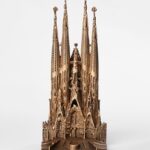 Sagrada Familia Barcelona Store: A Shopper's Paradise in the Heart of Barcelona
Sagrada Familia Barcelona Store: A Shopper's Paradise in the Heart of Barcelona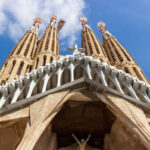 The Ultimate Shopping Guide at Sagrada Familia in Barcelona
The Ultimate Shopping Guide at Sagrada Familia in Barcelona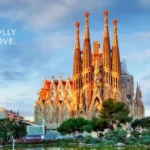 Exploring the Marvels of Sagrada Familia: Barcelona's Architectural Gem from the Inside | A Comprehensive Guide
Exploring the Marvels of Sagrada Familia: Barcelona's Architectural Gem from the Inside | A Comprehensive Guide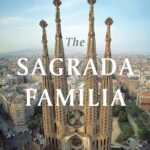 The Sagrada Familia: An In-depth Explanation of Gaudí's Masterpiece
The Sagrada Familia: An In-depth Explanation of Gaudí's Masterpiece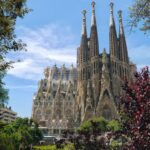 Discover the Complete Sagrada Familia: Barcelona's Architectural Masterpiece
Discover the Complete Sagrada Familia: Barcelona's Architectural MasterpieceIf you want to know other articles similar to The Magnificent Staircase of Sagrada Familia: Barcelona's Architectural Gem you can visit the category WHERE YOU CAN GO.
Deja una respuesta

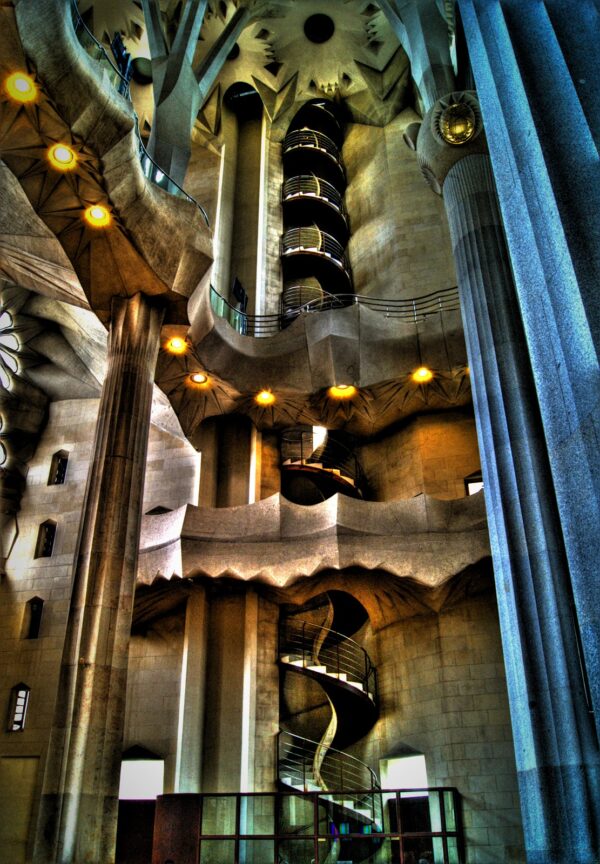








Read more!